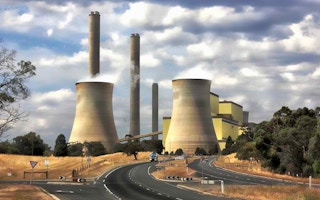Australia’s annual emissions have risen for the first time in 10 years, the latest inventory of greenhouse gas emissions has revealed.
The 2015-16 records show an increase in greenhouse gas emissions of 1.3 per cent, the first emissions increase since the 2005-06 fiscal year, according to energy and emissions market analysis company RepuTex.
The increase in emissions has been caused by a 33 per cent jump in emissions from land clearing, along with increases in brown-coal generation and liquefied natural gas production.
The trend is set to continue too, with the government predicting a six per cent increase in emissions on 2000 levels by 2020, though its Kyoto Protocol target is minus five per cent.
The government, however, will use a “carry-over-credit” for past performance to meet its Kyoto target.
“Meeting Australia’s abatement task is largely just a victory in accounting terms,” Reputex executive director Hugh Grossman said. “We have met our target, but we used a credit to get there, so it’s not a sign of any progress to reduce emissions.”
He said with current Australian climate policy settings, emissions were set to rise to historic levels, with no peak in sight before 2030.
The results came as the government announced it’s much-criticised (especially by the property industry) Emissions Reduction Fund will not receive funding in the 2016 budget, meaning this will be the last year of operation for the program, leaving what Reputex is calling a climate “policy void”.
Federal finance minister Mathias Cormann on Monday announced that funding for the ERF would not be extended beyond 2014-15’s $2.55 billion commitment. $1.2 billion has already been contracted over two auctions, with the outstanding amount set to be used on two auctions to be held later this year.
“With no further funding be allocated, this will leave the Australian market with no policy to curb emissions growth,” Mr Grossman said.
The government has announced it will be reviewing its Direct Action policy in June 2017, however RepuTex said that any outcome would be unlikely to be actioned before 2018-19.
“This is a long time for Australian emissions to be left to grow without any policy to incentivise emissions reductions or require companies to offset their growth,” Mr Grossman said.
However, he said this policy void was likely to exert pressure on the government to strengthen its climate policy credentials.
“Australia’s growing emissions could become either an Achilles heel for the government, or a catalyst for action,” Mr Grossman said.
“As emissions grow towards a new high, and the ERF is exhausted, we are likely to see increased local and international scrutiny, which may prompt the government to give some more direction on the ‘how’, ‘what’ and ‘when’ of its climate policy.”
This story was published with permission from The Fifth Estate.










